 Dale Davis, RN, BSN, is having a full circle moment. Last month, after 29 years at UAB, Davis retired. After one week of retirement, Davis is returning to work where his UAB career first started - in the UAB Emergency Department as a nurse.
Dale Davis, RN, BSN, is having a full circle moment. Last month, after 29 years at UAB, Davis retired. After one week of retirement, Davis is returning to work where his UAB career first started - in the UAB Emergency Department as a nurse.
In his almost three decades at UAB, Davis has played a key role in starting and growing cutting edge programs at UAB - from medical simulation (using high tech mannequins and real-world scenarios to train teams across UAB) to the military-civilian partnership which brings United States Air Force personnel to train at UAB.
But even before coming to UAB, Davis was on a path to make an impact in emergency care in the lives of many.
A lifelong passion for emergency medicine
Davis realized his calling for emergency medicine early in life. He loved the 70s show “Emergency!” - it introduced him to the world of paramedics. As a teenager, he was a lifeguard and had training from the American Red Cross.
At age 16, his skills were put to the test. He was on Logan Martin Lake when he heard screaming. A woman had fallen out of her boat and lost her leg after becoming stuck in the propeller. She was face down in the water and Davis was able to save her from drowning. He tied a tourniquet on her amputated leg, saving her from bleeding out as well.
“That’s where it all started for me,” Davis said. “Knowing that you saved someone, it puts this desire in your heart to continue to do what you can for your fellow human beings.”
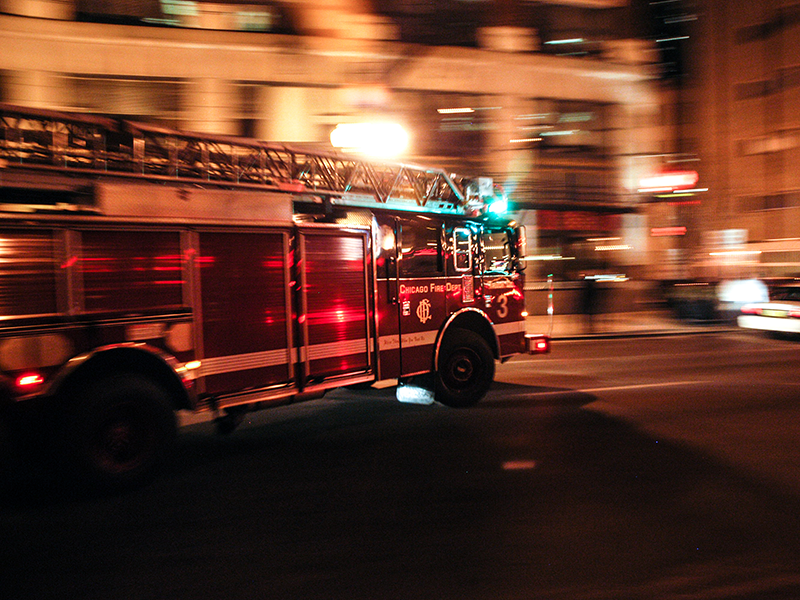
When first responders eventually arrived on the scene, they told Davis he did a great job in saving the woman’s life, and encouraged him to become a firefighter.
And so he did, first by becoming a volunteer firefighter as a teen, then becoming a full time firefighter and EMT for seven years.
Davis talks about the emotional toll and trauma that comes with being a first responder, like seeing what you see out in the field, from house fires, to cars flipped upside down, to wrecked 18-wheelers with a car wedged underneath. He admits that he became reckless in his personal life to cope with the mental stress of his job.
This recklessness after hours led to Davis needing emergency care himself after getting into two car accidents.
A third accident would change the course of his life.
From traumatic brain injury to nursing degreee
Davis was in Mexico with family on vacation. He was riding a motorcycle - but not wearing a helmet - on a winding road on a mountain. He took a tight curve and went off the steep side of the cliff - headfirst. He sustained a traumatic brain injury and had to be airlifted to Florida for medical attention.
“The TBI set me back a few years,” Davis said. “It humbled me. I needed humbling real bad when I was in my 20s.”
Davis had to learn to read and write again. From his mother using the Bible to help him learn to read again at the bedside, Dale continued in his journey of learning by taking remedial classes at Jeff State Community College. Then he furthered his education even more, being accepted to the School of Nursing at UAB.
Davis explains his trajectory from a TBI to a BSN as a “God thing,” saying everything that has happened in his life for a reason to take him to where he is today.
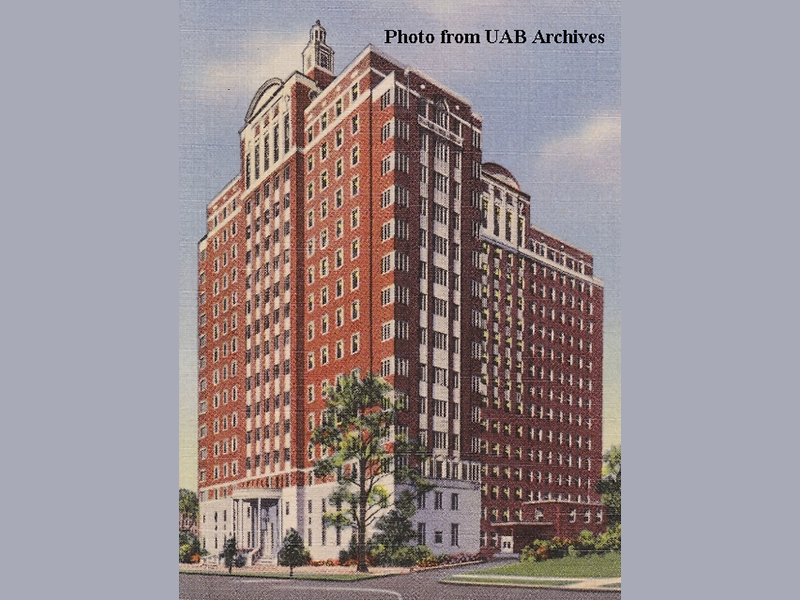 Jefferson Towers. Photo from UAB Libraries.
Jefferson Towers. Photo from UAB Libraries.
Davis asked to do his preceptorship in the Emergency Department and stayed there for nearly 10 years. He describes the environment as “high octane” and emphasizes the importance of every link in the chain of patient care: from doctors, to nurses, to X-ray technicians, to respiratory therapists, to chaplains, to environmental services.
“It takes every single person as a team to make this place work, and you have to appreciate everybody,” Davis said.
Davis saw many changes in trauma care over the years, from the growth of the Division of Trauma and Acute Care Surgery, to the move from the old ER in Jefferson Towers to North Pavilion: Davis literally locked the door to the old ER for the last time.
In 2007, after a few years in perioperative service, Davis became a founding member, along with Beth Rutledge, of the brand new Medical Emergency Team at UAB. The MET is an in-hospital first response team, bringing critical care for life-threatening medical emergencies within the hospital, like if a patient in a non-critical unit has an urgent and unanticipated change.
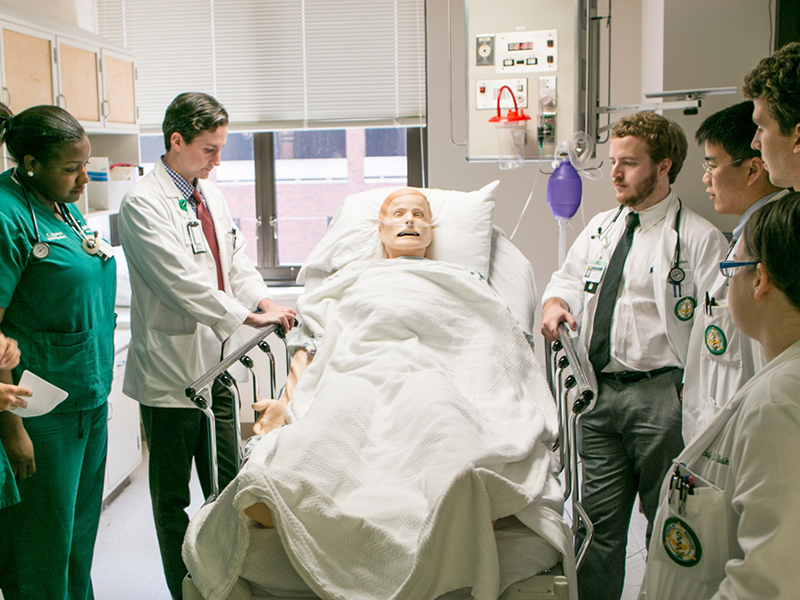 UAB medical professionals in a simulations scenario. Source: UAB Heersink School of Medicine news archives.
UAB medical professionals in a simulations scenario. Source: UAB Heersink School of Medicine news archives.
Davis was also tasked with bringing medical simulation to UAB. He was sent to train at Harvard and brought what he learned back to UAB, using high fidelity mannequins and creating real-world scenarios for teams to go through, to increase learning and quality improvement. Davis admits in those early days he had to “sell” simulation to teams, explaining how it would benefit the medical professionals and ultimately their patients. This program has now grown into the Office of Interprofessional Simulation and eight simulation spaces across UAB.
The Air Force comes to UAB
All the while, Davis’ passion and ability to foster connections across UAB was not going unnoticed.
Jeffrey Kerby, M.D., Ph.D., now the Director of UAB’s Division of Trauma and Acute Care Surgery, first connected with Davis in the 90s - when he was a surgical resident and Davis was a young nurse.
“Dale is someone that when he walked in the room, you knew you had a trusted partner and he could take care of things,” Kerby said.
After completing his residency, Kerby served in the United States Air Force as an active-duty surgeon.
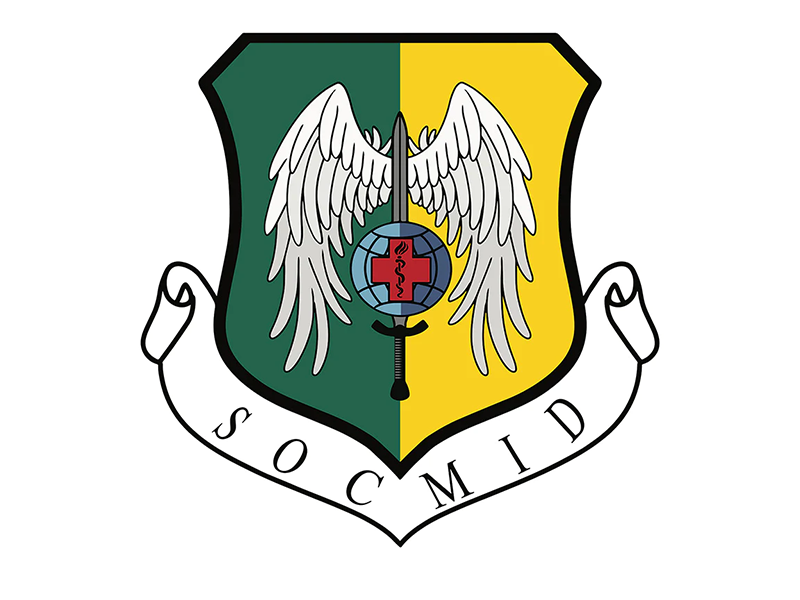 The seal for SOCMID, the Special Operations Center for Medical Integration and Development, which is housed at UAB.
The seal for SOCMID, the Special Operations Center for Medical Integration and Development, which is housed at UAB.
In 2003, Kerby came back to UAB. He had a unique opportunity for UAB to partner with the Air Force: pararescue jumpers (also known as “PJs”) and special operations medics who were previously doing medical skills sustainment in New Orleans now after Hurricane Katrina needed a new location to train. UAB, as a high volume, Level I trauma center, could be the perfect fit. The vision? To fully integrate the PJs and medics into the trauma teams, giving them ample hands-on opportunities to keep their medical skills sharp in-between deployments.
So in 2006, Davis, with his years of experience and hard-earned trust and respect, was once again tasked with bringing something new to UAB.
Davis says because the ask came from Dr. Kerby, his answer was an immediate yes, quickly followed up by, “what’s a PJ?” He jokes he didn’t know anything about the military before stepping into this role.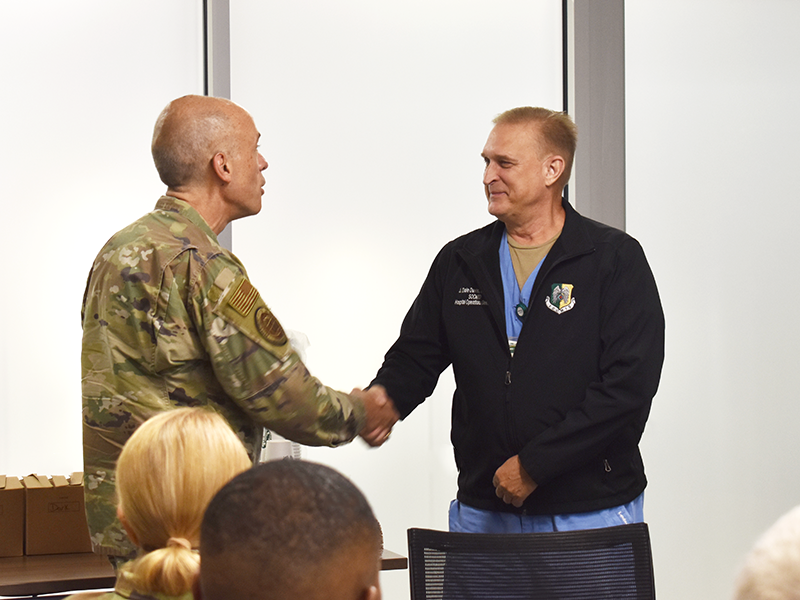 Dale Davis, RN, BSN, receives the challenge coin from Lt. Gen. Robert Miller, the Air and Space Force Surgeon General.
Dale Davis, RN, BSN, receives the challenge coin from Lt. Gen. Robert Miller, the Air and Space Force Surgeon General.
Everything ran through Davis in the early days: Davis connected with managers and nurses, explaining the program and what the PJs and medics would be doing in the hospital. He communicated with AF personnel all over the world, at all times of the day and night, picked them from the airport, and set up their apartment. He scheduled their rotations, ensuring they had a well-rounded clinical experience during their two weeks at UAB with time in the Emergency Department, ICU, and operating room.
Because of the immersive experience at UAB, the program’s reputation grew and word spread. The program tripled in size from the early days, now welcoming nearly 150 PJs and medics to UAB every year, with plans to expand to 300 in the near future. The longstanding military-civilian relationship was formalized in 2020 with the launch of the Special Operations Center for Medical Integration and Development (SOCMID) at UAB.
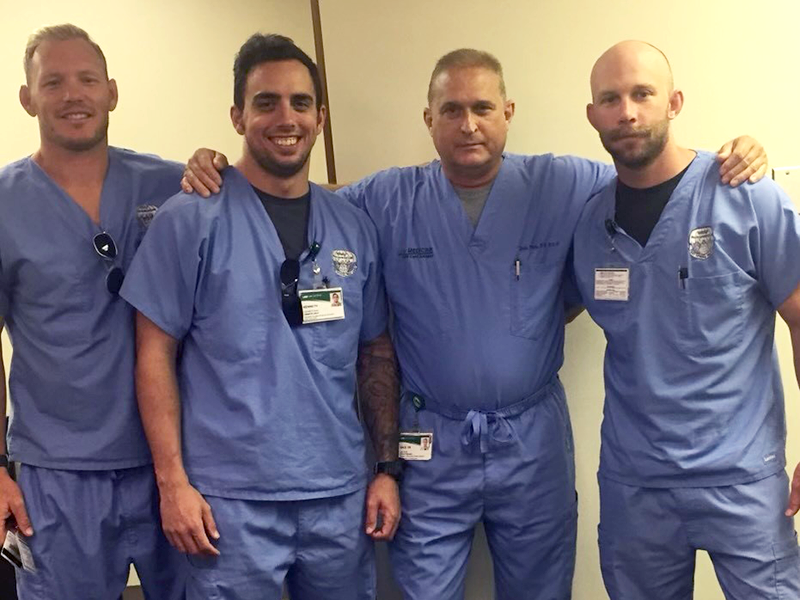 Davis with three Air Force pararescuemen who were a part of the Thai cave rescue in 2018.
Davis with three Air Force pararescuemen who were a part of the Thai cave rescue in 2018.
“I feel so honored to have been chosen to be at the beginning of something that will continue to grow and is so important to our elite military personnel,” Davis said.
In July, Davis was acknowledged by the United States Air Force for his role in the start and success of SOCMID. U.S. Air Force Lt. Gen. Robert Miller, Air Force Surgeon General, visited UAB to learn about SOCMID firsthand. He presented Davis with the challenge coin.
“Dale’s involvement has saved the lives of countless soldiers on the battlefield through developing these training programs,” Kerby said. “That’s irrefutable.”
Full circle: back to the Emergency Department
Davis says his return as a nurse in the Emergency Department this month is a return to something he’s always had a heart for. He will be working a flexible schedule, helping out as UAB’s Emergency Department expands, and will be eventually training younger nurses - after he gets re-trained himself.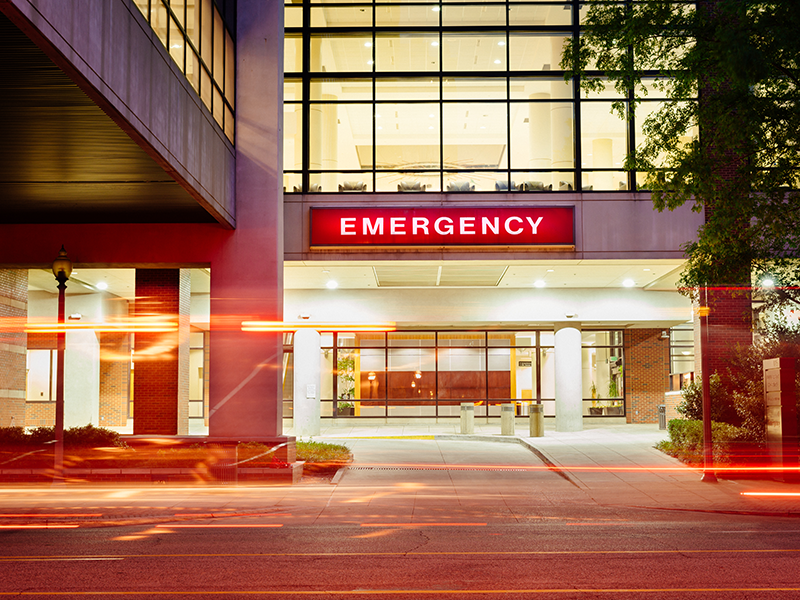
He says it’ll be a challenge and he has much to learn and refresh on - he hasn’t been at the bedside in 15 years.
“You’re never too old to learn, and I’m a great example of that,” he said. “I hope I’m accepted by these newer nurses, and they teach me the things that they know.”
Davis wants to make it to 30 years and beyond of service at UAB.
“We have some of the best surgeons and the best nurses in the world here at UAB,” Davis said. “It doesn’t get any better than right here. And that’s an honor that I will always carry, to be able to say that I worked at UAB.”